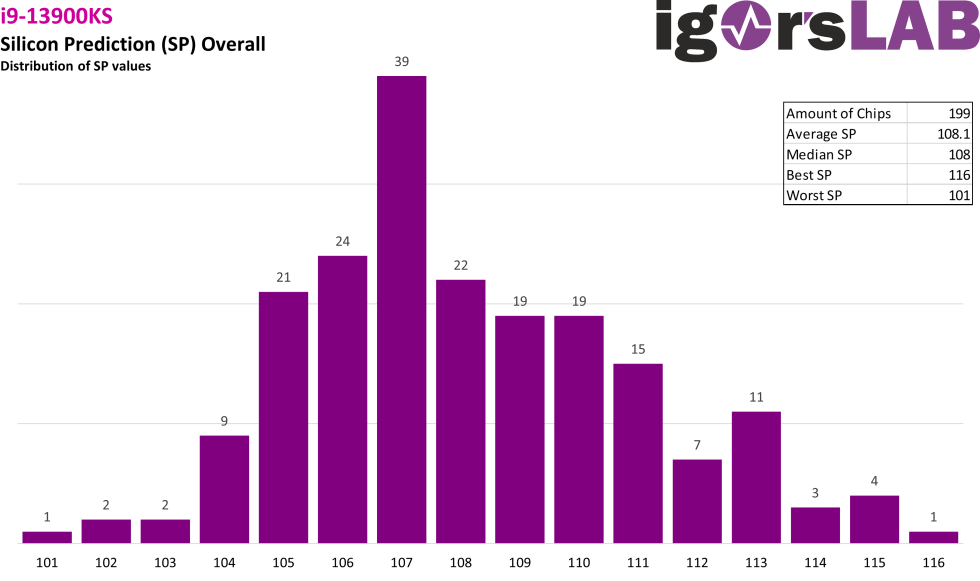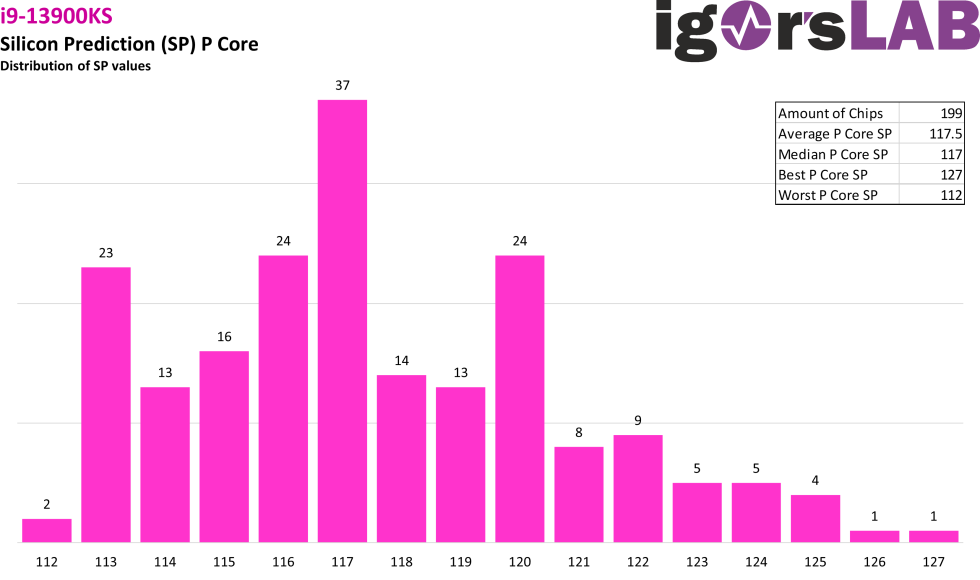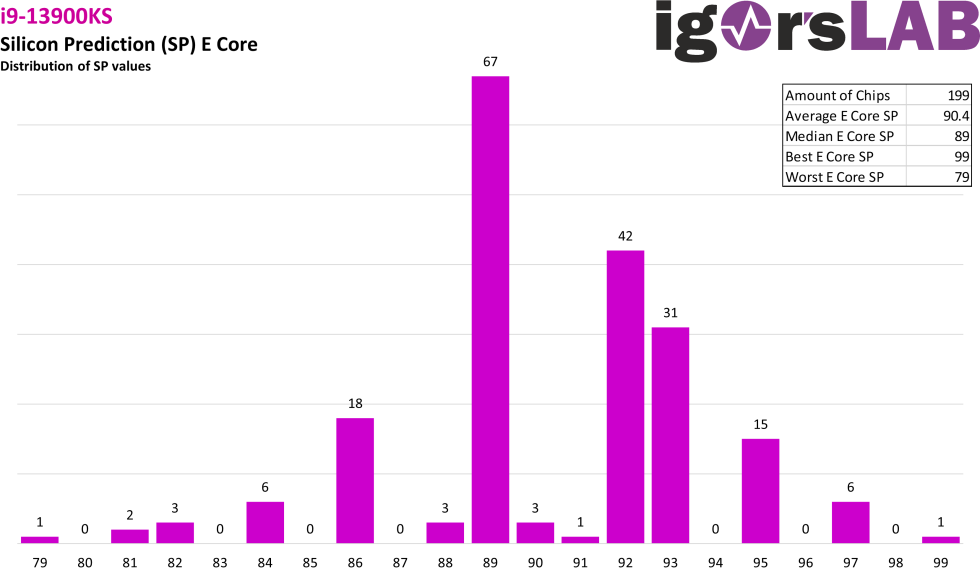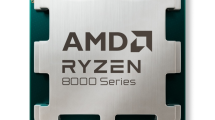i9-13900KS – SP Overall, P-Core and E-Core
Let’s now start with the binning results of the i9-13900KS. This time, all 199 CPUs come from “only” 3 different batches, which were all manufactured in Vietnam, recognizable by the “X” at the beginning of the batch number. Recently, photos with “L” batches have been circulating in various Internet forums, which probably stand for Malaysia. The fact that Intel also produces Raptor Lake chips there was new to me personally. Other 13th Gen SKUs would then logically have to be produced there as well and sooner or later appear in forum posts. But enough about the batches.
If we now first look at the total SP values, we see a supposedly even distribution with the largest number of chips near the average. The best overall SP is 116, the worst is 101, and most are just somewhere in between. Also interesting is the smaller spread between the best and worst chips, of only 15 points. For comparison, the K and KF are 24 and 22 points, respectively.
If we now consider only the SP of the P kernels, the distribution looks quite similar, with the difference that the clusters have moved to the left. This is probably due to the fact that a KS CPU can only become one when the P-cores reach a certain quality. Thus, there are indirectly more relatively bad than good KS CPUs. The maximum value here is 127, the minimum 112 and the average 117.
The E-nuclei are again much closer in distribution to a Gaussian curve with the greatest clustering nearly centered in the diagram and with a slight shift to the right. The opposite was observed for the K and KF, albeit only slightly. It is therefore reasonable to assume that Intel also looks at the quality of the E-cores for the 13900KS. But the V/F curve is also slightly different for the E-cores with 3.2 GHz instead of 3.0 GHz base clock and thus the SP scale is not 1:1 comparable.
The gaps with 0-3 CPUs between the larger clusters are also noticeable here. This phenomenon has also been seen in the other SKUs and could suggest a measurement inaccuracy on the part of Intel or Asus. The grouping of the E-cores into units of 4 with a common V/F curve could also be related to this.




































13 Antworten
Kommentar
Lade neue Kommentare
Urgestein
Mitglied
Mitglied
Mitglied
Mitglied
Veteran
Urgestein
Neuling
Urgestein
Urgestein
Veteran
Urgestein
Veteran
Alle Kommentare lesen unter igor´sLAB Community →